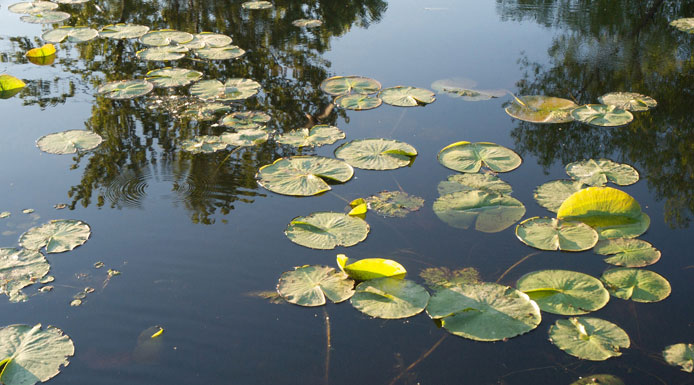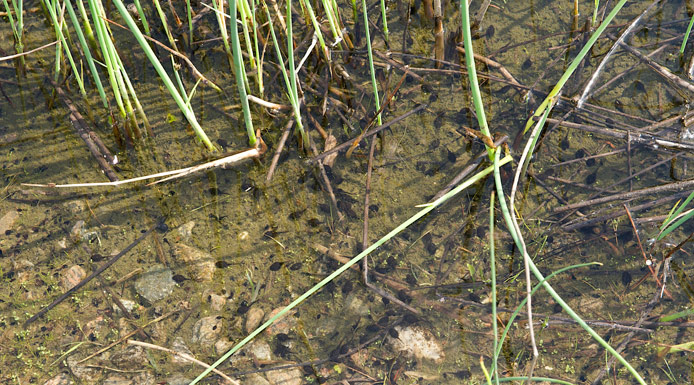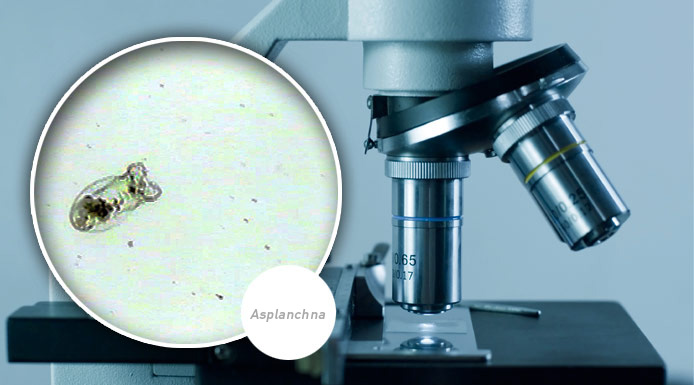LIFE UNDERWATER
- VEGETATION
- PLANKTON
- PHYTOPLANKTON
- ZOOPLANKTON
- BENTHOS
- FISH
- AMPHIBIANS AND REPTILES
PLANKTON - ZOOPLANKTON - NUTRITION
![]() FLASH PLAYER IS REQUIRED TO SEE THE CONTENT OF THIS PAGE
FLASH PLAYER IS REQUIRED TO SEE THE CONTENT OF THIS PAGE

Feeding mechanisms in zooplankton vary greatly from species to species.

Cladocerans, and especially Daphnia, play an important role in increasing water transparency by grazing on algae. By removing large amounts of suspended algae and bacteria, cladocerans improve water clarity, permitting increased light penetration.
VIDEO - 0 min 30 s
Daphnia filter around 80 mL of water every 24 hours to feed on algae. They have 4 to 6 pairs of thoracic appendages inside their carapace. By rapidly moving its appendages, Ceriodaphnia creates a current that brings food to its mouth while also allowing the organism to breathe.
Only edible algae are retained. Algae with unsuitable shapes (rod-shaped, star-shaped or too long) are rejected.

Tadpoles
In turn, cladocerans serve as food for many kinds of fish, benthic organisms, insects and amphibians.

Some rotifers (Asplanchna) are predators that feed on other small rotifers and unicellular organisms.
Others feed by filtering water. The cilia arranged in a crown around their heads are used to ingest water in order to absorb microorganisms and particles.
Some species of rotifers parasitize molluscs, worms or crustaceans.
